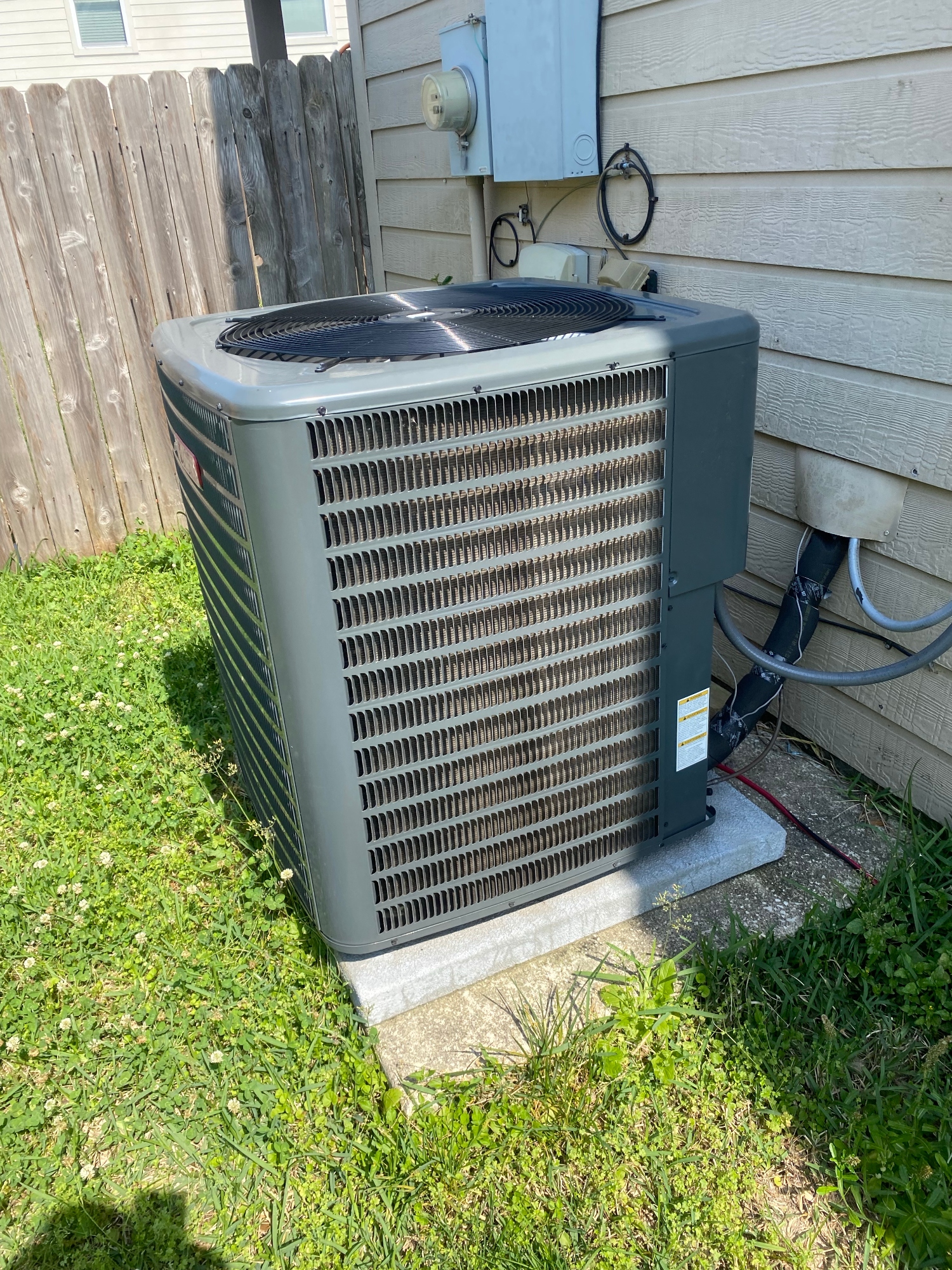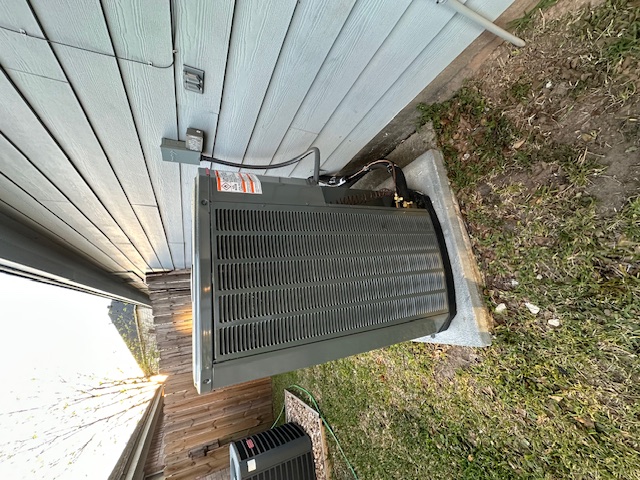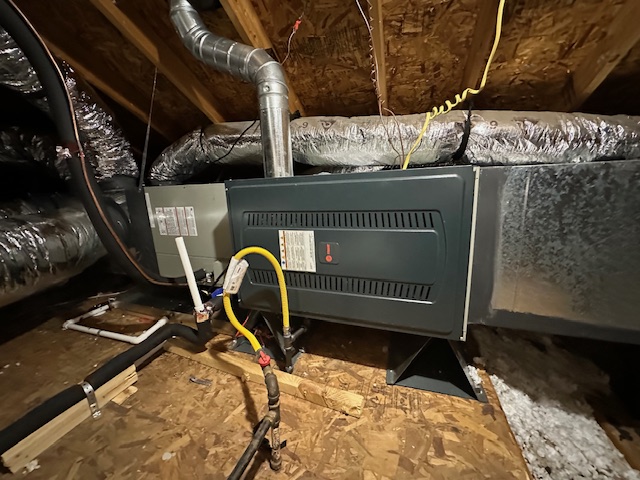Summer heat can make any home uncomfortable, but cooling costs don't have to drain your wallet. Many homeowners think they must choose between staying cool and staying within budget, but affordable cooling solutions exist for every situation and home size.
The key to finding affordable cooling lies in matching the right system type to your specific needs, budget, and home layout rather than simply buying the cheapest option available. Window units, mini splits, portable air conditioners, and central air systems all offer different benefits at various price points.
Smart shoppers also know that the lowest upfront cost doesn't always mean the best deal. In this article, you’ll learn how to choose the most affordable cooling system based on your space, climate, and energy budget.
Here’s what you need to know:
- How to match a cooling system to your budget and home
- Cheapest upfront vs cheapest to run
- Quick fixes before you buy new equipment
- Understanding the 20 rule and realistic expectations
- When an upgrade beats a bargain purchase
Keep reading! Understanding when to repair existing equipment, how to maximize efficiency, and when an upgrade actually saves money helps homeowners make choices that keep both their homes and budgets comfortable for years to come.
How to match a cooling system to your budget and home
The right cooling system depends on your living situation and available funds. Small spaces need different solutions than large homes, and renters face different constraints than homeowners.
Small spaces on a tight budget and when a window unit wins
Cheap window air conditioning units offer the best value for rooms under 500 square feet. These units cost between $150-$400 and cool single rooms effectively.
Window units work best in bedrooms, small apartments, and home offices. They plug into standard outlets and don't need professional installation.
According to ENERGY STAR, certified room air conditioners use about 23% less energy than standard models, which helps lower monthly cooling costs in small spaces.
A 5,000 BTU window unit cools rooms up to 150 square feet. An 8,000 BTU model handles spaces up to 350 square feet. Larger rooms need 10,000-12,000 BTU units.
Key advantages:
- Low upfront cost
- No installation fees
- Easy to remove for winter storage
- Energy efficient for small areas
Window units use 20-25 BTUs per square foot for proper cooling. A 200 square foot bedroom needs about 5,000 BTUs. This makes window units the cheapest option for targeted cooling.
Renters vs homeowners and portable ac flexibility
Affordable portable AC units give renters cooling options without permanent changes. These units cost $200-$600 and move between rooms easily.
Portable units don't require window modifications like traditional window units. They use a hose that vents through a small window opening. Most landlords allow this setup.
Renters benefit from portability when moving. Homeowners might prefer window units for better efficiency and lower noise levels.
Portable AC pros for renters:
- No permanent installation
- Move between apartments
- Less visible from outside
- Works with casement windows
Window unit advantages for homeowners:
- More efficient cooling
- Quieter operation
- Lower energy costs
- Better security
Portable units typically cost 10-15% more to operate than similar window units. The convenience often justifies this cost for renters.
When a ductless mini split outperforms cheap gear long term
Mini split systems cost $1,500-$4,000 installed but save money over 5-10 years. They use 30-40% less energy than window units cooling the same space.
These systems work best for homeowners planning to stay long-term. The payback period ranges from 3-7 years depending on local energy costs.
Mini splits cool multiple rooms with one outdoor unit. A single system can handle 2-4 indoor units efficiently. This beats buying multiple window units for whole-home cooling.
Long-term benefits:
- Lower electric bills
- Quiet operation
- Year-round heating and cooling
- Increased home value
A mini split cooling a 1,000 square foot space costs about $300 annually to run. The same area cooled by window units costs $450-$500 yearly.
Mini splits make sense when cooling costs exceed $400 annually. They also work better in climates with long cooling seasons.
Cheapest upfront vs cheapest to run
The cheapest cooling option upfront might cost more money over time through higher energy bills. Window units offer the lowest initial cost, while mini-split systems provide the best long-term value through energy savings.
What is the cheapest cooling method for immediate relief
Window air conditioners cost the least upfront, typically ranging from $150 to $500. They plug into standard outlets and require minimal installation.
Portable air conditioners cost slightly more at $200 to $700. They roll on wheels and need no permanent installation.
Fans provide the cheapest immediate relief at $20 to $200. Ceiling fans, tower fans, and box fans move air to create cooling effects.
Evaporative coolers work well in dry climates for $100 to $400. They use water to cool air naturally.
These options work right away. Window units cool single rooms effectively. Portable units offer flexibility to move between spaces.
Fans don't actually lower temperature. They make people feel cooler by moving air across skin. This costs much less to run than any AC system.
The cheapest cooling system to operate month to month
Mini-split systems use the least energy long-term despite higher upfront costs. They have SEER ratings of 20-30, meaning lower monthly bills.
Central air systems with high SEER ratings (16+) run efficiently for whole homes. Newer models save 20-40% compared to older units.
Heat pumps cost less to operate than traditional AC units in most climates. They move heat instead of creating cold air, using less electricity.
Window units consume more energy per square foot cooled. They typically have lower SEER ratings of 8-15.
Portable AC units use the most energy for cooling power provided. Poor efficiency ratings mean higher monthly costs.
Mini-splits target specific rooms without cooling unused spaces. This saves money compared to cooling entire homes.
Heat pumps work best in moderate climates. Extreme heat reduces their efficiency advantages.
Pairing fans with smart thermostats to cut runtime costs
Ceiling fans let people raise thermostat settings by 4-6 degrees while staying comfortable. This reduces AC runtime by 30-40%.
According to the U.S. Department of Energy, using a ceiling fan allows you to raise the thermostat about 4°F without reducing comfort, cutting air-conditioner runtime and energy use.
Smart thermostats learn cooling patterns and adjust automatically. They can save 10-15% on cooling costs through better scheduling.
Programmable schedules prevent cooling empty homes. Setting temperatures higher when away saves significant money.
Fan and AC combinations work better than either alone. Fans circulate cool air more effectively throughout rooms.
Zoned cooling with smart vents directs air only where needed. This prevents wasting energy on unused spaces.
Smart thermostats cost $100-300 but pay for themselves through energy savings. Most models work with existing HVAC systems.
Running fans costs about $1 per month versus $100+ for AC units. The combination approach maximizes comfort while minimizing costs.
Quick fixes before you buy new equipment
Simple changes to your home and existing cooling system can drop indoor temperatures by 5-10 degrees without spending money on new equipment. Basic maintenance and airflow improvements often solve cooling problems that feel like system failures.
Shade, sealing, and sun control that lower temps fast
Window treatments block heat before it enters your home. Blackout curtains reduce room temperature by 3-5 degrees during peak sun hours. Reflective window film cuts heat gain by up to 30%.
Air leaks waste cooling power. Check around windows, doors, and electrical outlets for gaps. Caulk small cracks and use weatherstripping on doors.
Outdoor shade protects your AC unit. A shaded outdoor unit runs 10% more efficiently than one in direct sun. Plant bushes or install an awning 2-3 feet away from the unit.
Attic ventilation removes trapped hot air. Ridge vents and soffit vents create airflow that keeps your ceiling cooler. This reduces the load on your cooling system.
Strategic landscaping blocks afternoon sun from hitting your home's west-facing walls. Trees or tall shrubs planted 6-10 feet from the house create natural cooling.
Filter and coil care that boosts output for free
Dirty filters block airflow and force your system to work harder. Replace filters every 30-90 days depending on usage. A clean filter improves cooling output by 5-15%.
Coil cleaning restores heat transfer efficiency. The outdoor coil collects dirt, leaves, and debris. Turn off power and spray the coil with a garden hose from inside out.
Indoor coil maintenance requires professional cleaning every 2-3 years. Dirty indoor coils reduce cooling capacity and increase energy use by 20-30%.
Condensate drain clogs cause water backup and humidity problems. Pour a cup of white vinegar down the drain line quarterly to prevent blockages.
Refrigerant levels affect cooling power. Low refrigerant makes your system run longer without reaching set temperatures. Only licensed technicians can check and add refrigerant.
Airflow tweaks that make affordable units feel stronger
Vent positioning directs cool air where you need it. Open vents in rooms you use most. Close vents in unused rooms to increase pressure elsewhere.
Fan direction matters for air circulation. Ceiling fans should spin counterclockwise in summer to push air down. This creates a wind chill effect that makes 78°F feel like 72°F.
Return air clearance ensures proper system function. Keep furniture and curtains at least 2 feet away from return vents. Blocked returns reduce airflow by 25-40%.
Thermostat placement affects temperature readings. Move lamps and electronics away from your thermostat. Heat sources near the thermostat make your system run longer than needed.
Ductwork inspection reveals airflow problems. Look for disconnected or crushed ducts in crawl spaces and attics. Seal duct joints with metal tape, not cloth duct tape.
Understanding the 20 rule and realistic expectations
Most air conditioning systems can only cool indoor air about 20 degrees below the outdoor temperature. When systems struggle to achieve bigger temperature differences, this often points to equipment sizing problems or airflow issues.
What the 20 rule for air conditioners means in practice
The 20-degree rule means your AC system works best when keeping indoor temps within 20 degrees of outdoor temps. If it's 100 degrees outside, expecting your home to stay at 70 degrees puts major strain on your system.
Your AC cools air by moving heat from inside to outside. When the temperature gap gets too big, the system runs constantly. This uses more energy and costs more money.
Realistic temperature targets:
- 90°F outside = 70°F inside target
- 95°F outside = 75°F inside target
- 100°F outside = 80°F inside target
Most systems can handle the 20-degree difference without problems. Going beyond this range makes your AC work much harder than designed.
When expecting more cooling signals sizing or duct issues
If your AC can't maintain a 20-degree difference, something needs attention. Undersized units struggle to cool properly on hot days. Oversized units cycle on and off too often.
Poor ductwork causes major cooling problems. Leaky ducts lose cool air before it reaches your rooms. Blocked vents reduce airflow throughout your home.
Common signs of system problems:
- Indoor temps more than 20 degrees below outdoor temps
- System runs constantly but never reaches set temperature
- Some rooms much warmer than others
- High energy bills during summer months
Bad insulation also affects cooling ability. Heat enters through walls, windows, and attics faster than your AC can remove it.
How to stay comfortable when outdoor temps soar
Smart strategies help you stay cool when temperatures climb above 95 degrees. Set your thermostat to 78-80 degrees instead of your normal 72-74 degrees.
Use ceiling fans to move air around rooms. Moving air feels cooler on your skin. Close blinds and curtains during the day to block heat from windows.
Energy-saving cooling tips:
- Change air filters monthly during summer
- Seal air leaks around doors and windows
- Use programmable thermostats wisely
- Run AC at steady temps instead of big swings
Plan activities for cooler parts of the day. Cook meals outside or use small appliances that don't create heat. These small changes reduce the load on your cooling system.
When an upgrade beats a bargain purchase
Sometimes paying more upfront for quality equipment saves money over time compared to cheap options. High-efficiency systems, targeted cooling zones, and manufacturer support can make expensive units the smarter financial choice.
High SEER heat pumps that pay back on energy bills
Heat pumps with SEER ratings above 16 cost more than basic 14 SEER models. The price difference ranges from $1,000 to $3,000 depending on the brand and size.
Energy savings add up quickly:
- 18 SEER systems use 25% less electricity than 14 SEER units
- Monthly savings of $40-80 are common in hot climates
- Annual savings reach $500-900 for larger homes
The payback period typically runs 3-5 years. After that, homeowners pocket the energy savings for the remaining 10-15 years of the system's life.
Modern heat pumps work efficiently in cold weather too. They provide both heating and cooling from one system. This makes them ideal for affordable heating and cooling in moderate climates.
Mini split zones that cool rooms you actually use
Whole-house systems waste energy cooling empty rooms. Mini splits let homeowners cool specific areas when needed.
A three-zone mini split system costs $4,000-6,000 installed. Compare this to a $3,000 window unit setup that covers the same space less efficiently.
Key advantages include:
- Each room gets its own temperature control
- No ductwork needed in older homes
- Energy use drops 20-30% compared to central air
- Quiet operation without window unit noise
Many families run just two zones during the day and add bedrooms at night. This targeted approach cuts cooling costs significantly compared to maintaining 72 degrees throughout an entire house.
Rebates, warranties, and service support that add real value
Premium systems come with manufacturer rebates that budget models lack. Federal tax credits cover 30% of heat pump costs through 2025.
Financial protection matters:
- 10-year parts warranties vs 1-2 years on cheap units
- Extended labor coverage from certified dealers
- Service networks that stock replacement parts
Local utility companies offer additional rebates for high-efficiency equipment. These programs can reduce system costs by $500-2,000 depending on the area.
Quality manufacturers train local technicians on their equipment. This means faster repairs and proper maintenance. Cheap systems often leave homeowners searching for parts or qualified service technicians.
Conclusion
Affordable cooling systems provide effective ways to stay comfortable without breaking the bank. Budget air conditioners, fans, and evaporative coolers offer different benefits for various needs and spaces.
Energy efficiency plays a key role in long-term savings. Many affordable units now include energy-saving features that reduce monthly bills while keeping homes cool.
Government rebates and tax credits make these systems even more accessible. These incentives help offset initial costs for many homeowners.
Alternative cooling methods like ceiling fans and portable units work well for specific situations. They cost less upfront and use less energy than traditional central air systems.
Modern budget cooling systems combine affordability with reliability. Technology improvements have made these units more effective and longer-lasting than older models.
Simple maintenance helps any cooling system work better and last longer. Regular filter changes and basic cleaning keep units running smoothly.
Smart shopping and proper sizing ensure the best value. Comparing features and energy ratings helps buyers find the most cost-effective option for their specific needs.
These cooling solutions make comfortable indoor temperatures accessible to more people. With careful selection, anyone can find an affordable way to beat the heat.
Contact Horizon Air Solutions to explore affordable cooling systems that fit your home, comfort goals, and budget.











